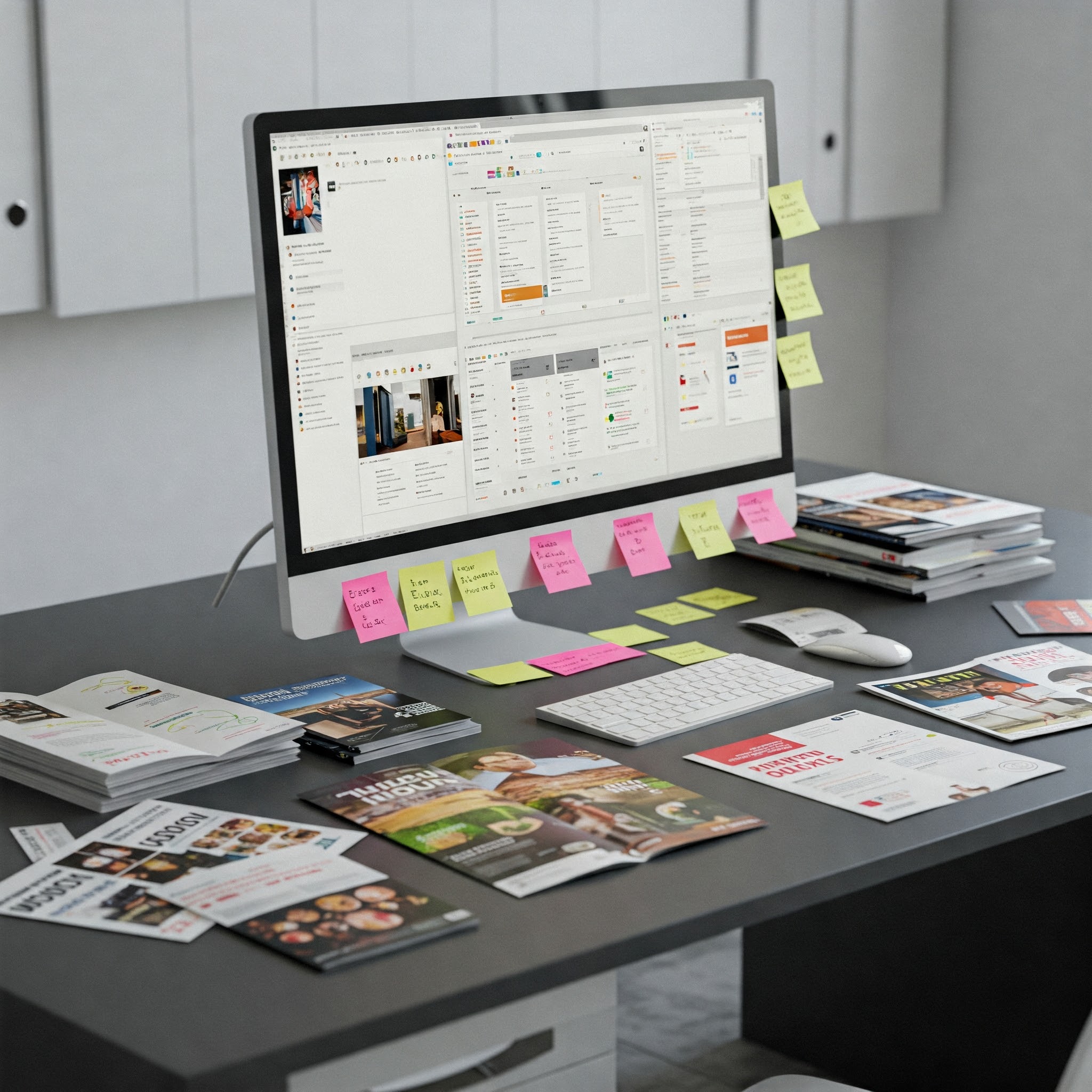
In today’s fast-paced, visually-driven world, design is more than just making things look good—it’s the heartbeat of your brand. Great design connects you to your audience, communicates your message, and sets you apart in a crowded marketplace. With brands fighting for attention at every corner, keeping up with design trends isn’t just about staying stylish—it’s about strategically positioning your brand to shine.
Whether launching a new brand or refreshing an existing one, understanding and leveraging current design trends can give you a serious edge. Here are the top 10 design trends for 2025 to help your brand stay relevant and competitive.
1. Minimalist Design: Less Is Still More
Minimalism continues to dominate design trends. By removing unnecessary clutter, minimalist design directs focus to what matters most—your message. Clean lines, simple layouts, and intentional use of space create a polished, modern, and professional look.
💡 Pro Tip: Focus on clean typography, a neutral color palette, and strategic use of whitespace. Minimalism is about making every detail count.
2. Bold Typography: Make a Statement
Typography is no longer just functional—it’s a design feature. Bold, oversized fonts grab attention and convey personality, making them a powerful tool in a world where you have mere seconds to captivate your audience.
💡 Pro Tip: Experiment with typefaces that reflect your brand’s tone. Whether commanding authority or sparking creativity, bold typography can speak volumes.
3. Sustainable Design: Eco-Friendly Aesthetics
Sustainability is more than a buzzword—it’s a brand necessity. Incorporating eco-conscious elements into your design shows your commitment to the planet while appealing to environmentally aware consumers.
💡 Pro Tip: Use organic shapes, earthy tones, and eco-friendly materials in your branding. Highlight your sustainability efforts in visuals and messaging to build credibility and trust.
4. 3D and Immersive Design: Add Depth
3D elements bring an interactive, cutting-edge feel to your designs. Whether through product visuals, website features, or AR experiences, 3D design creates a more engaging and modern experience.
💡 Pro Tip: Use subtle 3D effects on digital platforms to add depth and realism. For a more immersive approach, explore augmented reality integrations.
5. Retro and Nostalgic Design: Tap Into Memories
Nostalgia is powerful. Retro fonts, color schemes from past decades, and vintage-inspired illustrations evoke familiarity and warmth, making your brand relatable and timeless.
💡 Pro Tip: Mix retro elements with modern aesthetics to keep your design fresh while honoring the past.
6. Abstract and Asymmetrical Layouts: Break the Grid
Perfect alignment is overrated. Asymmetrical and abstract layouts bring energy and creativity to your designs, setting you apart from cookie-cutter competitors.
💡 Pro Tip: Balance is still key. Use asymmetry to create intrigue without confusing your audience.
7. Gradient Color Schemes: Smooth Transitions
Gradients have made a stylish comeback. From bold transitions to subtle shading, gradients add depth and sophistication to your branding.
💡 Pro Tip: Use gradients as backgrounds or overlays to create visual interest and a sense of movement.
8. Dark Mode: Sleek and Stylish
Dark mode isn’t just a tech trend—it’s become a design staple. Offering a sleek, high-contrast look, dark-themed designs are easier on the eyes and convey modernity and luxury.
💡 Pro Tip: Pair dark backgrounds with vibrant accents for a striking, high-impact design.
9. Hand-Drawn Elements: Add a Personal Touch
Hand-drawn illustrations and doodles add a human, authentic feel to your brand. They’re perfect for brands that value creativity, craftsmanship, or approachability.
💡 Pro Tip: Incorporate custom illustrations or hand-lettered logos to emphasize individuality and personality.
10. Inclusivity in Design: Represent Everyone
Diversity and inclusion are essential for connecting with today’s audiences. Inclusive design isn’t just about imagery—it’s about accessibility and relatability.
💡 Pro Tip: Audit your visuals and messaging to ensure they reflect a diverse range of people and experiences. Make accessibility a priority to ensure your designs are inclusive for all.
Why Design Trends Matter
Keeping up with design trends isn’t just about aesthetics—it’s about staying relevant in a constantly evolving marketplace. Adopting these trends helps you:
- Boost Brand Recognition: Trend-aligned designs make your brand more memorable.
- Connect with Your Audience: Trends often reflect larger cultural shifts, helping you stay in tune with what your audience values.
- Stay Competitive: Modern, innovative design shows your audience that your brand is forward-thinking.
Ready to Redefine Your Brand’s Design?
At Not Brad’s Creative Farm, we help businesses leverage the latest design trends to create brands that captivate, connect, and convert. Whether you’re looking for a fresh brand identity or want to integrate cutting-edge visuals into your strategy, we’re here to make it happen.
📞 Contact us today to discover how we can elevate your brand and ensure it stands out in 2025 and beyond.



